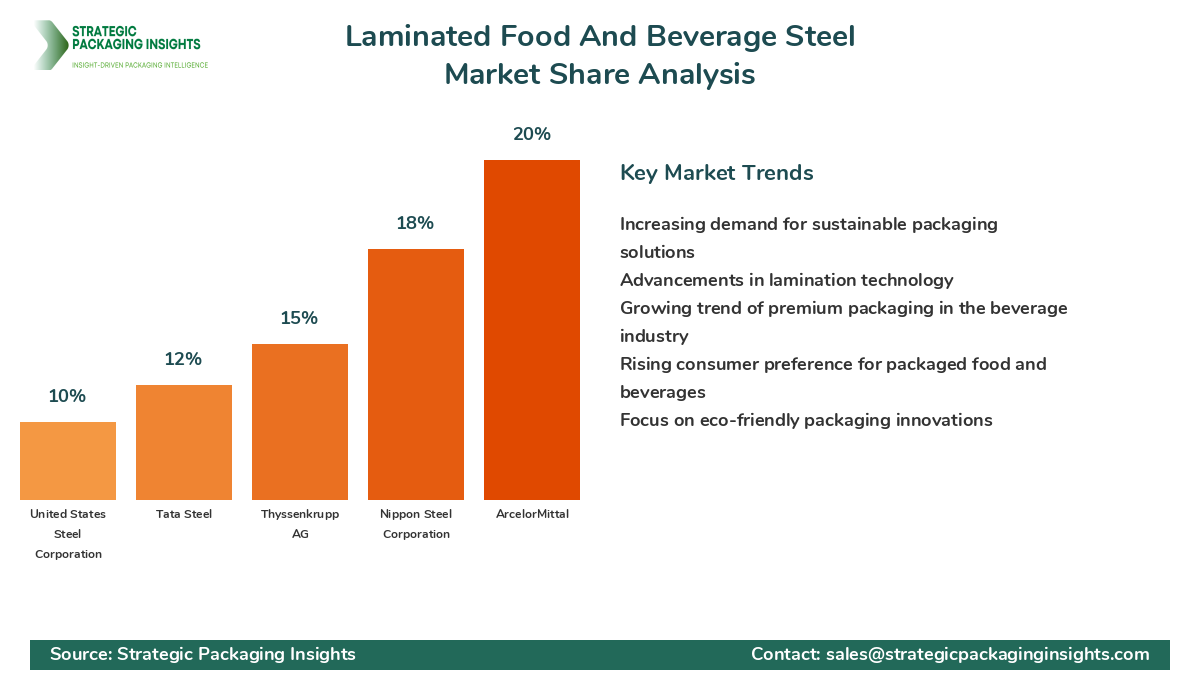- Home
- Beverage Packaging
- Laminated Food And Beverage Steel Market Size, Future Growth and Forecast 2033
Laminated Food And Beverage Steel Market Size, Future Growth and Forecast 2033
Laminated Food And Beverage Steel Market Segments - by Application (Cans, Containers, Others), Material Type (Aluminum, Tin, Others), End-User (Food Industry, Beverage Industry, Others), and Region (Asia Pacific, North America, Latin America, Europe, and Middle East & Africa) - Market Dynamics, Growth Opportunities, Strategic Drivers, and PESTLE Outlook (2025–2033)
Laminated Food And Beverage Steel Market Outlook
The laminated food and beverage steel market was valued at $12 billion in 2024 and is projected to reach $18 billion by 2033, growing at a CAGR of 4.5% during the forecast period 2025-2033. This market is driven by the increasing demand for sustainable and durable packaging solutions in the food and beverage industry. Laminated steel offers superior barrier properties, which are essential for preserving the quality and extending the shelf life of products. The rising consumer preference for packaged food and beverages, coupled with the growth of the e-commerce sector, is further propelling the demand for laminated steel packaging. Additionally, advancements in lamination technology are enhancing the aesthetic appeal and functionality of steel packaging, making it a preferred choice among manufacturers.
However, the market faces challenges such as the high cost of raw materials and the complexity of the lamination process, which can hinder growth. Regulatory restrictions on the use of certain materials in food packaging also pose a challenge to market expansion. Despite these restraints, the market holds significant growth potential due to the increasing focus on eco-friendly packaging solutions. Innovations in recyclable and biodegradable laminated steel products are expected to create new opportunities for market players. Furthermore, the growing trend of premium packaging in the beverage industry is likely to boost the demand for laminated steel cans and containers.
Report Scope
| Attributes | Details |
| Report Title | Laminated Food And Beverage Steel Market Size, Future Growth and Forecast 2033 |
| Base Year | 2024 |
| Historic Data | 2017-2023 |
| Forecast Period | 2025-2033 |
| Number of Pages | 247 |
| Application | Cans, Containers, Others |
| Material Type | Aluminum, Tin, Others |
| End-User | Food Industry, Beverage Industry, Others |
| Region | North America, Europe, Asia Pacific, Latin America, Middle East & Africa |
| Customization Available | Yes* |
Key Highlights Laminated Food And Beverage Steel Market
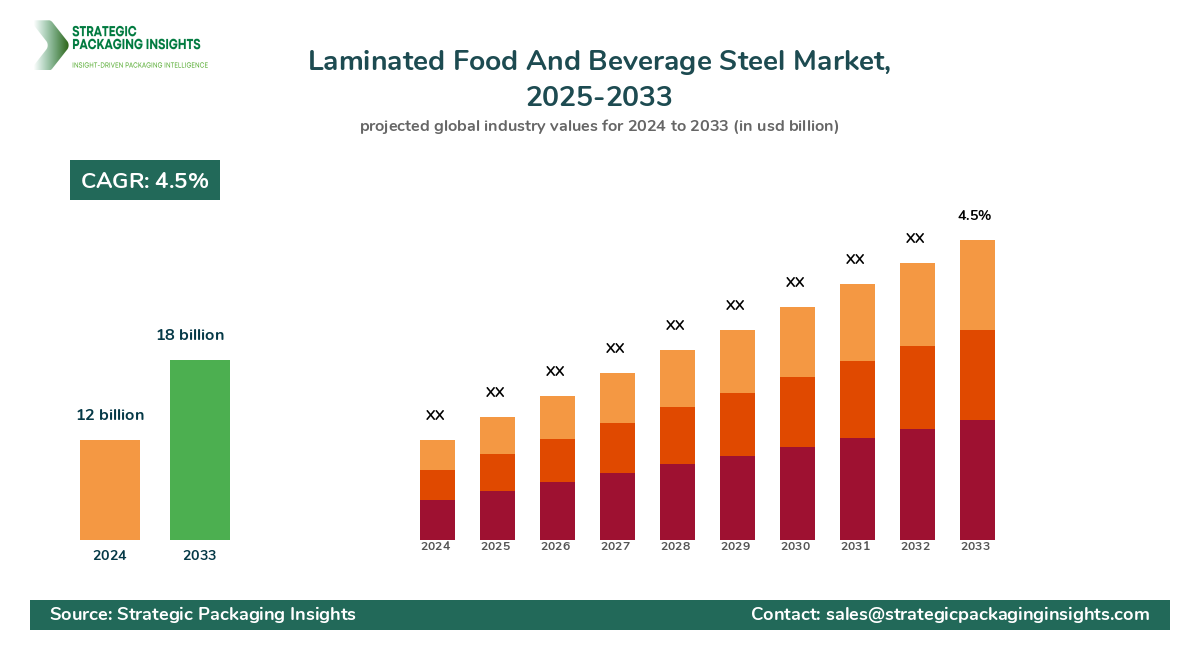
- The market is expected to grow at a CAGR of 4.5% from 2025 to 2033.
- Increasing demand for sustainable packaging solutions is a major driver.
- Advancements in lamination technology are enhancing product appeal.
- High raw material costs pose a challenge to market growth.
- Regulatory restrictions on materials used in food packaging are a concern.
- Eco-friendly packaging innovations present new opportunities.
- Premium packaging trends in the beverage industry are boosting demand.
- The e-commerce sector is driving the need for durable packaging solutions.
- Asia Pacific is the fastest-growing region in the market.
- Recyclable and biodegradable laminated steel products are gaining traction.
Competitive Intelligence
The laminated food and beverage steel market is highly competitive, with key players focusing on innovation and strategic partnerships to gain a competitive edge. ArcelorMittal, a leading player, holds a significant market share due to its extensive product portfolio and strong global presence. The company is known for its focus on sustainable steel solutions and continuous R&D investments. Nippon Steel Corporation is another major player, renowned for its advanced lamination technologies and high-quality products. The company has a strong foothold in the Asia Pacific region, which is a key growth market.
Thyssenkrupp AG is gaining ground with its innovative packaging solutions and strategic collaborations with major food and beverage brands. The company’s focus on eco-friendly products aligns with the growing demand for Sustainable Packaging. Tata Steel, with its robust distribution network and customer-centric approach, is also a prominent player in the market. The company’s emphasis on product customization and quality assurance has helped it maintain a strong client base. Other notable players include United States Steel Corporation, JFE Steel Corporation, and POSCO, each with unique strengths and strategic initiatives that contribute to their market positions.
Regional Market Intelligence of Laminated Food And Beverage Steel
In North America, the laminated food and beverage steel market is valued at $3 billion and is expected to grow steadily due to the increasing demand for sustainable packaging solutions. The region's focus on reducing plastic waste and promoting recyclable materials is driving the adoption of laminated steel. In Europe, the market is valued at $2.5 billion, with a strong emphasis on eco-friendly packaging and stringent regulations on food safety. The Asia Pacific region, valued at $4 billion, is the fastest-growing market, driven by rapid urbanization, increasing disposable incomes, and a growing preference for packaged food and beverages.
Latin America, with a market size of $1.5 billion, is witnessing growth due to the expanding food and beverage industry and rising consumer awareness about sustainable packaging. The Middle East & Africa region, valued at $1 billion, is experiencing moderate growth, with increasing investments in the food processing sector and a focus on improving packaging standards. Each region presents unique opportunities and challenges, with varying consumer preferences and regulatory landscapes influencing market dynamics.
Top Countries Insights in Laminated Food And Beverage Steel
In the United States, the laminated food and beverage steel market is valued at $2 billion, with a CAGR of 3%. The country's focus on sustainability and innovation in packaging solutions is driving market growth. In China, the market is valued at $3 billion, with a CAGR of 6%, driven by rapid industrialization and a growing middle class with increasing purchasing power. Germany, with a market size of $1.2 billion and a CAGR of 4%, is focusing on eco-friendly packaging solutions and stringent regulatory standards.
India, valued at $1 billion with a CAGR of 7%, is experiencing growth due to the expanding food and beverage industry and increasing consumer awareness about sustainable packaging. Brazil, with a market size of $800 million and a CAGR of 5%, is witnessing growth driven by the rising demand for packaged food and beverages and government initiatives promoting sustainable packaging solutions.
Laminated Food And Beverage Steel Market Segments Insights
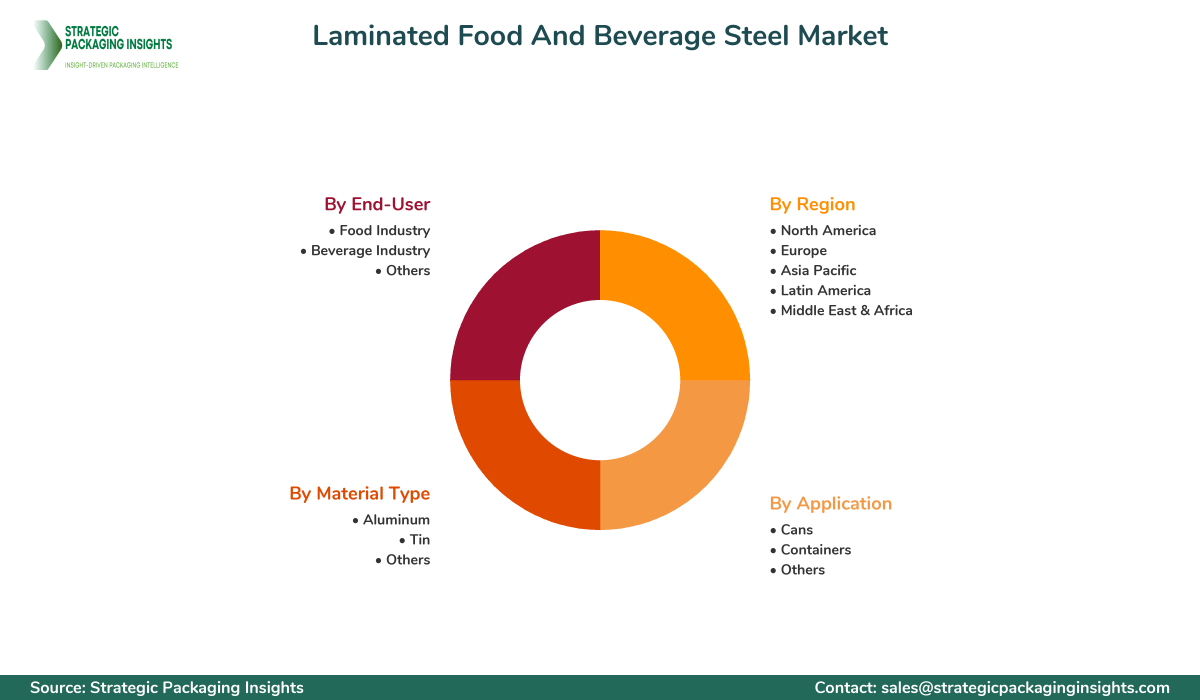
Application Analysis
The application segment of the laminated food and beverage steel market is primarily divided into cans, containers, and others. Cans are the most significant sub-segment, driven by their widespread use in the beverage industry. The demand for canned beverages is increasing due to their convenience, long shelf life, and recyclability. Manufacturers are focusing on enhancing the aesthetic appeal and functionality of cans through advanced lamination techniques. Containers, on the other hand, are gaining popularity in the food industry for packaging ready-to-eat meals and perishable goods. The need for durable and tamper-proof packaging solutions is driving the demand for laminated steel containers.
Other applications include specialty packaging solutions for niche markets, such as luxury food items and gourmet beverages. These applications are witnessing growth due to the increasing trend of premium packaging, which enhances brand value and consumer appeal. The versatility of laminated steel in providing superior barrier properties and aesthetic appeal makes it a preferred choice for various packaging applications. As consumer preferences shift towards sustainable and visually appealing packaging, the application segment is expected to witness significant growth.
Material Type Analysis
The material type segment includes aluminum, tin, and others. Aluminum is the most widely used material due to its lightweight, corrosion-resistant, and recyclable properties. The demand for aluminum laminated steel is driven by its extensive use in beverage cans and food containers. Tin, known for its excellent barrier properties and malleability, is also a popular choice for laminated steel packaging. The use of tin in food packaging is driven by its ability to preserve the taste and quality of products.
Other materials, such as specialty alloys, are gaining traction in niche applications where specific properties are required. The choice of material is influenced by factors such as cost, availability, and regulatory compliance. As the market shifts towards sustainable packaging solutions, the demand for recyclable and eco-friendly materials is expected to increase. Manufacturers are investing in R&D to develop innovative materials that meet the evolving needs of the packaging industry.
End-User Analysis
The end-user segment is categorized into the food industry, beverage industry, and others. The food industry is the largest end-user of laminated steel packaging, driven by the increasing demand for packaged and processed foods. The need for durable and tamper-proof packaging solutions is critical in maintaining food safety and quality. The beverage industry is also a significant end-user, with the growing demand for canned beverages driving the need for laminated steel packaging.
Other end-users include niche markets such as luxury food items and gourmet beverages, where premium packaging solutions are in demand. The focus on sustainability and eco-friendly packaging is influencing the choice of materials and packaging solutions among end-users. As consumer preferences shift towards sustainable and visually appealing packaging, the end-user segment is expected to witness significant growth.
Regional Analysis
The regional analysis of the laminated food and beverage steel market highlights the varying growth patterns and opportunities across different regions. North America is a mature market, with a strong focus on sustainability and innovation in packaging solutions. The region's emphasis on reducing plastic waste and promoting recyclable materials is driving the adoption of laminated steel. Europe, with its stringent regulations on food safety and eco-friendly packaging, is also a significant market for laminated steel.
The Asia Pacific region is the fastest-growing market, driven by rapid urbanization, increasing disposable incomes, and a growing preference for packaged food and beverages. Latin America and the Middle East & Africa are experiencing moderate growth, with increasing investments in the food processing sector and a focus on improving packaging standards. Each region presents unique opportunities and challenges, with varying consumer preferences and regulatory landscapes influencing market dynamics.
The market share distribution of key players in the laminated food and beverage steel market is characterized by a few dominant players holding significant shares, while numerous smaller companies compete for the remaining market. ArcelorMittal and Nippon Steel Corporation are leading the market, leveraging their extensive product portfolios and strong global presence. These companies are focusing on innovation and strategic partnerships to maintain their competitive edge. Thyssenkrupp AG and Tata Steel are gaining market share through their emphasis on eco-friendly products and customer-centric approaches. The competitive positioning of these companies is influenced by factors such as pricing strategies, product differentiation, and strategic collaborations. The market share distribution affects pricing, innovation, and partnerships, as companies strive to enhance their market positions and meet the evolving needs of the packaging industry.
Laminated Food And Beverage Steel Market Segments
The Laminated Food And Beverage Steel market has been segmented on the basis of
Application
- Cans
- Containers
- Others
Material Type
- Aluminum
- Tin
- Others
End-User
- Food Industry
- Beverage Industry
- Others
Region
- North America
- Europe
- Asia Pacific
- Latin America
- Middle East & Africa
Primary Interview Insights
What are the key drivers for the laminated food and beverage steel market?
What challenges does the market face?
Which regions are experiencing the fastest growth?
How are companies addressing sustainability in packaging?
What opportunities exist for market players?
Latest Reports

The Hot Melt Glue Labeler market was valued at $1.2 billion in 2024 and is projected to reach $2.3 billion by 2033, growing at a CAGR of 6.5% during the forecast period 2025–2033.

The Ethical Label market was valued at $1.5 billion in 2024 and is projected to reach $3.2 billion by 2033, growing at a CAGR of 8.5% during the forecast period 2025–2033.

The Packaging Tensioner market was valued at $1.2 billion in 2024 and is projected to reach $2.3 billion by 2033, growing at a CAGR of 6.5% during the forecast period 2025–2033.
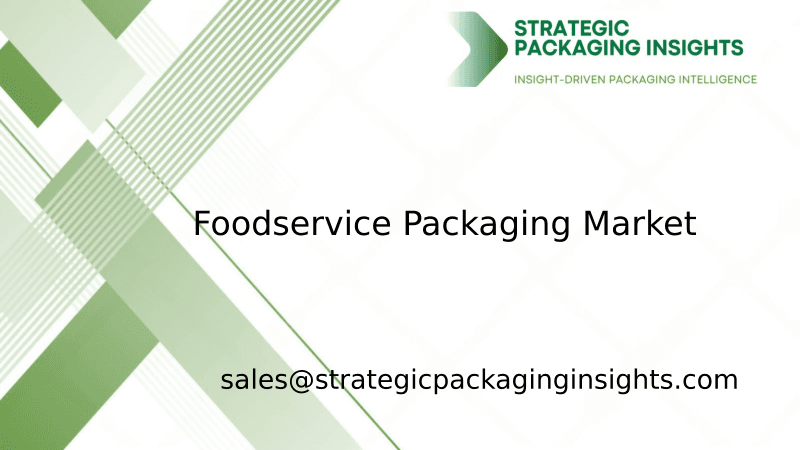
The foodservice packaging market was valued at $120 billion in 2024 and is projected to reach $180 billion by 2033, growing at a CAGR of 4.5% during the forecast period 2025–2033.

The nano-enabled packaging market was valued at $15.2 billion in 2024 and is projected to reach $35.6 billion by 2033, growing at a CAGR of 9.5% during the forecast period 2025–2033.
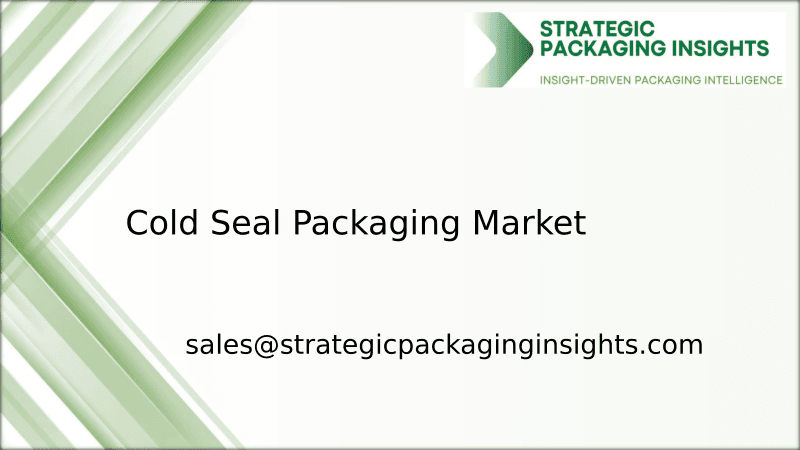
The Cold Seal Packaging market was valued at $1.5 billion in 2024 and is projected to reach $2.3 billion by 2033, growing at a CAGR of 4.8% during the forecast period 2025–2033.

The Transparent Barrier Packaging Films market was valued at $12.5 billion in 2024 and is projected to reach $20.3 billion by 2033, growing at a CAGR of 5.8% during the forecast period 2025–2033.

The Flatback Tape market was valued at $2.5 billion in 2024 and is projected to reach $4.1 billion by 2033, growing at a CAGR of 5.8% during the forecast period 2025–2033.
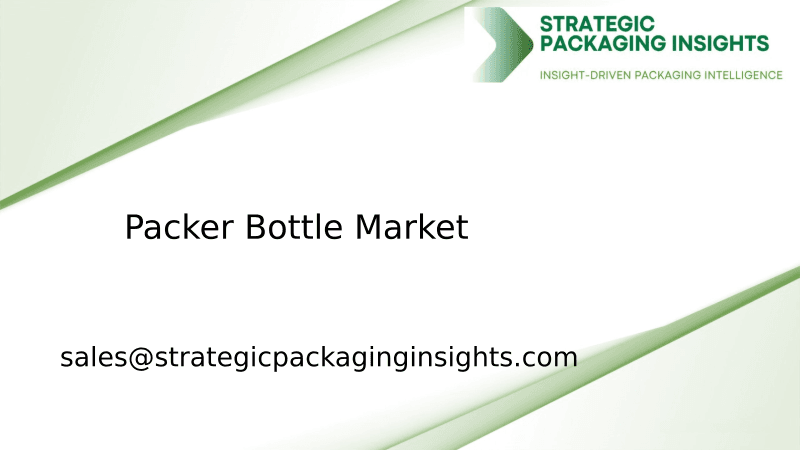
The packer bottle market was valued at $3.5 billion in 2024 and is projected to reach $5.8 billion by 2033, growing at a CAGR of 5.2% during the forecast period 2025–2033.
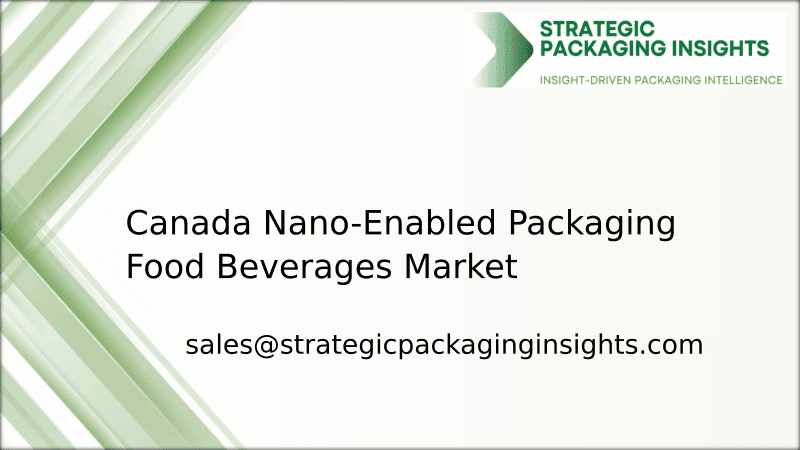
The Canada Nano-Enabled Packaging Food Beverages market was valued at $1.2 billion in 2024 and is projected to reach $3.5 billion by 2033, growing at a CAGR of 12.5% during the forecast period 2025–2033.
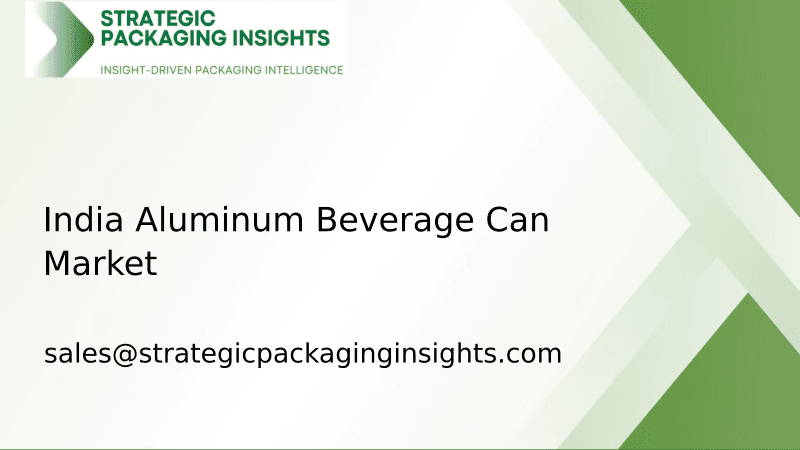
The India Aluminum Beverage Can market was valued at $1.2 billion in 2024 and is projected to reach $2.5 billion by 2033, growing at a CAGR of 8.5% during the forecast period 2025–2033.
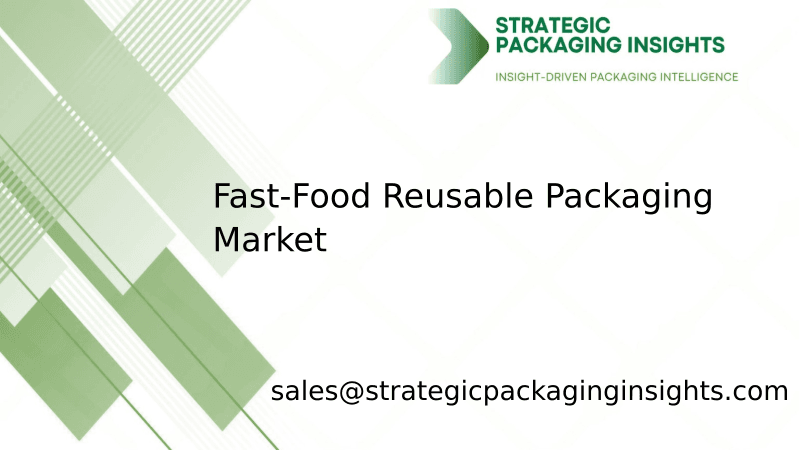
The fast-food reusable packaging market was valued at $1.2 billion in 2024 and is projected to reach $3.5 billion by 2033, growing at a CAGR of 12.5% during the forecast period 2025–2033.
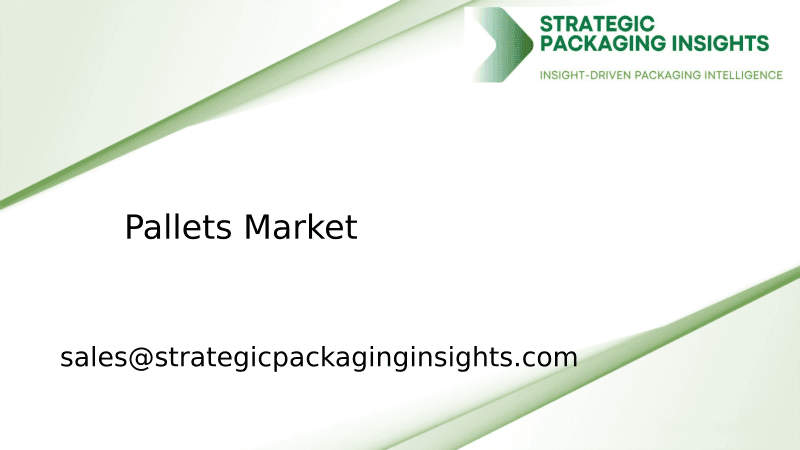
The pallets market was valued at $59.91 billion in 2024 and is projected to reach $88.69 billion by 2033, growing at a CAGR of 4.5% during the forecast period 2025–2033.

The lamination adhesives market was valued at $2.5 billion in 2024 and is projected to reach $4.1 billion by 2033, growing at a CAGR of 5.8% during the forecast period 2025–2033.

The garment packing machine market was valued at $1.2 billion in 2024 and is projected to reach $2.5 billion by 2033, growing at a CAGR of 8.5% during the forecast period 2025–2033.
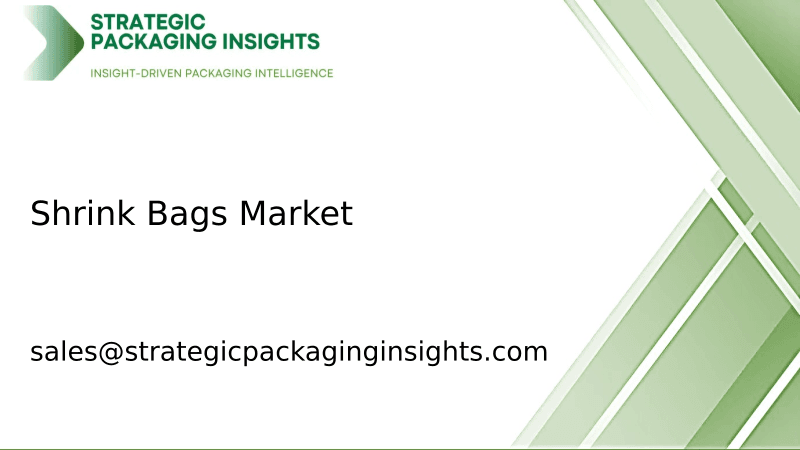
The shrink bags market was valued at $3.5 billion in 2024 and is projected to reach $5.8 billion by 2033, growing at a CAGR of 5.2% during the forecast period 2025–2033.

The beverage packaging market was valued at $128 billion in 2024 and is projected to reach $186 billion by 2033, growing at a CAGR of 4.2% during the forecast period 2025–2033.

The North America Freight and Logistics market was valued at $1,200 billion in 2024 and is projected to reach $1,800 billion by 2033, growing at a CAGR of 4.5% during the forecast period 2025–2033.

The Anti-Counterfeiting Packaging market was valued at $105 billion in 2024 and is projected to reach $182 billion by 2033, growing at a CAGR of 6.5% during the forecast period 2025–2033.

The Active and Modified Atmospheric Packaging market was valued at $15.2 billion in 2024 and is projected to reach $25.8 billion by 2033, growing at a CAGR of 6.5% during the forecast period 2025–2033.

The molded fiber packaging market was valued at $7.5 billion in 2024 and is projected to reach $12.3 billion by 2033, growing at a CAGR of 5.8% during the forecast period 2025–2033.

The micro packaging market was valued at $1.2 billion in 2024 and is projected to reach $2.5 billion by 2033, growing at a CAGR of 8.5% during the forecast period 2025–2033.

The Anti-counterfeit Pharmaceuticals Packaging market was valued at $80 billion in 2024 and is projected to reach $150 billion by 2033, growing at a CAGR of 7.5% during the forecast period 2025–2033.
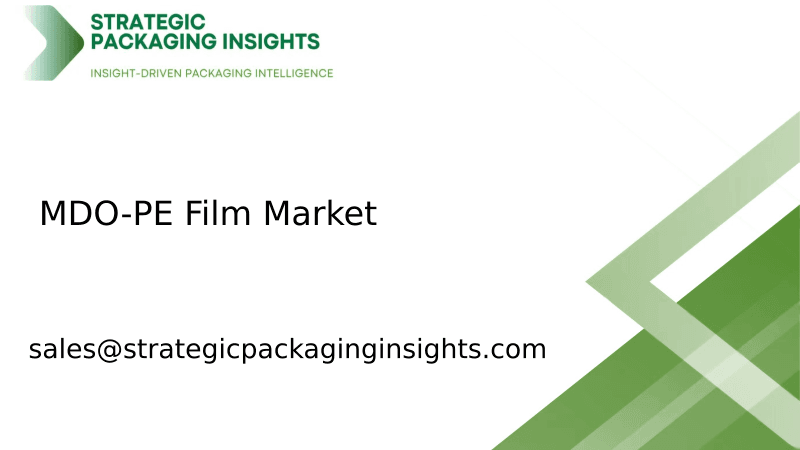
The MDO-PE Film market was valued at $3.5 billion in 2024 and is projected to reach $5.8 billion by 2033, growing at a CAGR of 5.2% during the forecast period 2025–2033.
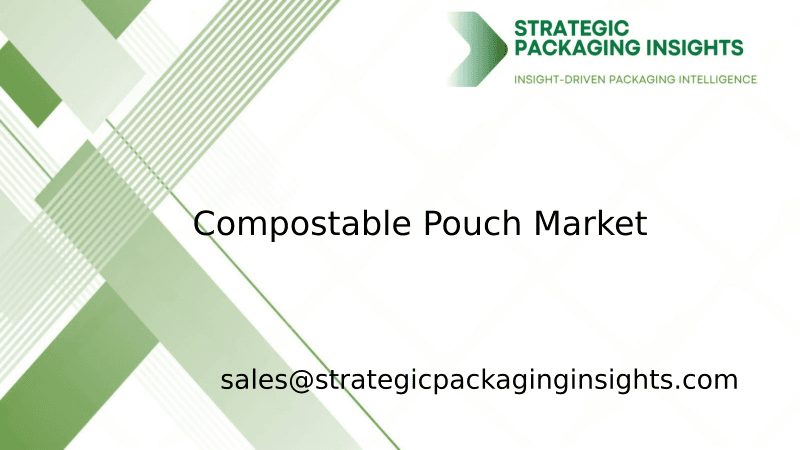
The compostable pouch market was valued at $1.2 billion in 2024 and is projected to reach $3.5 billion by 2033, growing at a CAGR of 12.5% during the forecast period 2025–2033.

The Hot Melt Glue Labeler market was valued at $1.2 billion in 2024 and is projected to reach $2.3 billion by 2033, growing at a CAGR of 6.5% during the forecast period 2025–2033.

The Ethical Label market was valued at $1.5 billion in 2024 and is projected to reach $3.2 billion by 2033, growing at a CAGR of 8.5% during the forecast period 2025–2033.

The Packaging Tensioner market was valued at $1.2 billion in 2024 and is projected to reach $2.3 billion by 2033, growing at a CAGR of 6.5% during the forecast period 2025–2033.

The foodservice packaging market was valued at $120 billion in 2024 and is projected to reach $180 billion by 2033, growing at a CAGR of 4.5% during the forecast period 2025–2033.

The nano-enabled packaging market was valued at $15.2 billion in 2024 and is projected to reach $35.6 billion by 2033, growing at a CAGR of 9.5% during the forecast period 2025–2033.

The Cold Seal Packaging market was valued at $1.5 billion in 2024 and is projected to reach $2.3 billion by 2033, growing at a CAGR of 4.8% during the forecast period 2025–2033.

The Transparent Barrier Packaging Films market was valued at $12.5 billion in 2024 and is projected to reach $20.3 billion by 2033, growing at a CAGR of 5.8% during the forecast period 2025–2033.

The Flatback Tape market was valued at $2.5 billion in 2024 and is projected to reach $4.1 billion by 2033, growing at a CAGR of 5.8% during the forecast period 2025–2033.

The packer bottle market was valued at $3.5 billion in 2024 and is projected to reach $5.8 billion by 2033, growing at a CAGR of 5.2% during the forecast period 2025–2033.

The Canada Nano-Enabled Packaging Food Beverages market was valued at $1.2 billion in 2024 and is projected to reach $3.5 billion by 2033, growing at a CAGR of 12.5% during the forecast period 2025–2033.

The India Aluminum Beverage Can market was valued at $1.2 billion in 2024 and is projected to reach $2.5 billion by 2033, growing at a CAGR of 8.5% during the forecast period 2025–2033.

The fast-food reusable packaging market was valued at $1.2 billion in 2024 and is projected to reach $3.5 billion by 2033, growing at a CAGR of 12.5% during the forecast period 2025–2033.

The pallets market was valued at $59.91 billion in 2024 and is projected to reach $88.69 billion by 2033, growing at a CAGR of 4.5% during the forecast period 2025–2033.

The lamination adhesives market was valued at $2.5 billion in 2024 and is projected to reach $4.1 billion by 2033, growing at a CAGR of 5.8% during the forecast period 2025–2033.

The garment packing machine market was valued at $1.2 billion in 2024 and is projected to reach $2.5 billion by 2033, growing at a CAGR of 8.5% during the forecast period 2025–2033.

The shrink bags market was valued at $3.5 billion in 2024 and is projected to reach $5.8 billion by 2033, growing at a CAGR of 5.2% during the forecast period 2025–2033.

The beverage packaging market was valued at $128 billion in 2024 and is projected to reach $186 billion by 2033, growing at a CAGR of 4.2% during the forecast period 2025–2033.

The North America Freight and Logistics market was valued at $1,200 billion in 2024 and is projected to reach $1,800 billion by 2033, growing at a CAGR of 4.5% during the forecast period 2025–2033.

The Anti-Counterfeiting Packaging market was valued at $105 billion in 2024 and is projected to reach $182 billion by 2033, growing at a CAGR of 6.5% during the forecast period 2025–2033.

The Active and Modified Atmospheric Packaging market was valued at $15.2 billion in 2024 and is projected to reach $25.8 billion by 2033, growing at a CAGR of 6.5% during the forecast period 2025–2033.

The molded fiber packaging market was valued at $7.5 billion in 2024 and is projected to reach $12.3 billion by 2033, growing at a CAGR of 5.8% during the forecast period 2025–2033.

The micro packaging market was valued at $1.2 billion in 2024 and is projected to reach $2.5 billion by 2033, growing at a CAGR of 8.5% during the forecast period 2025–2033.

The Anti-counterfeit Pharmaceuticals Packaging market was valued at $80 billion in 2024 and is projected to reach $150 billion by 2033, growing at a CAGR of 7.5% during the forecast period 2025–2033.

The MDO-PE Film market was valued at $3.5 billion in 2024 and is projected to reach $5.8 billion by 2033, growing at a CAGR of 5.2% during the forecast period 2025–2033.

The compostable pouch market was valued at $1.2 billion in 2024 and is projected to reach $3.5 billion by 2033, growing at a CAGR of 12.5% during the forecast period 2025–2033.
